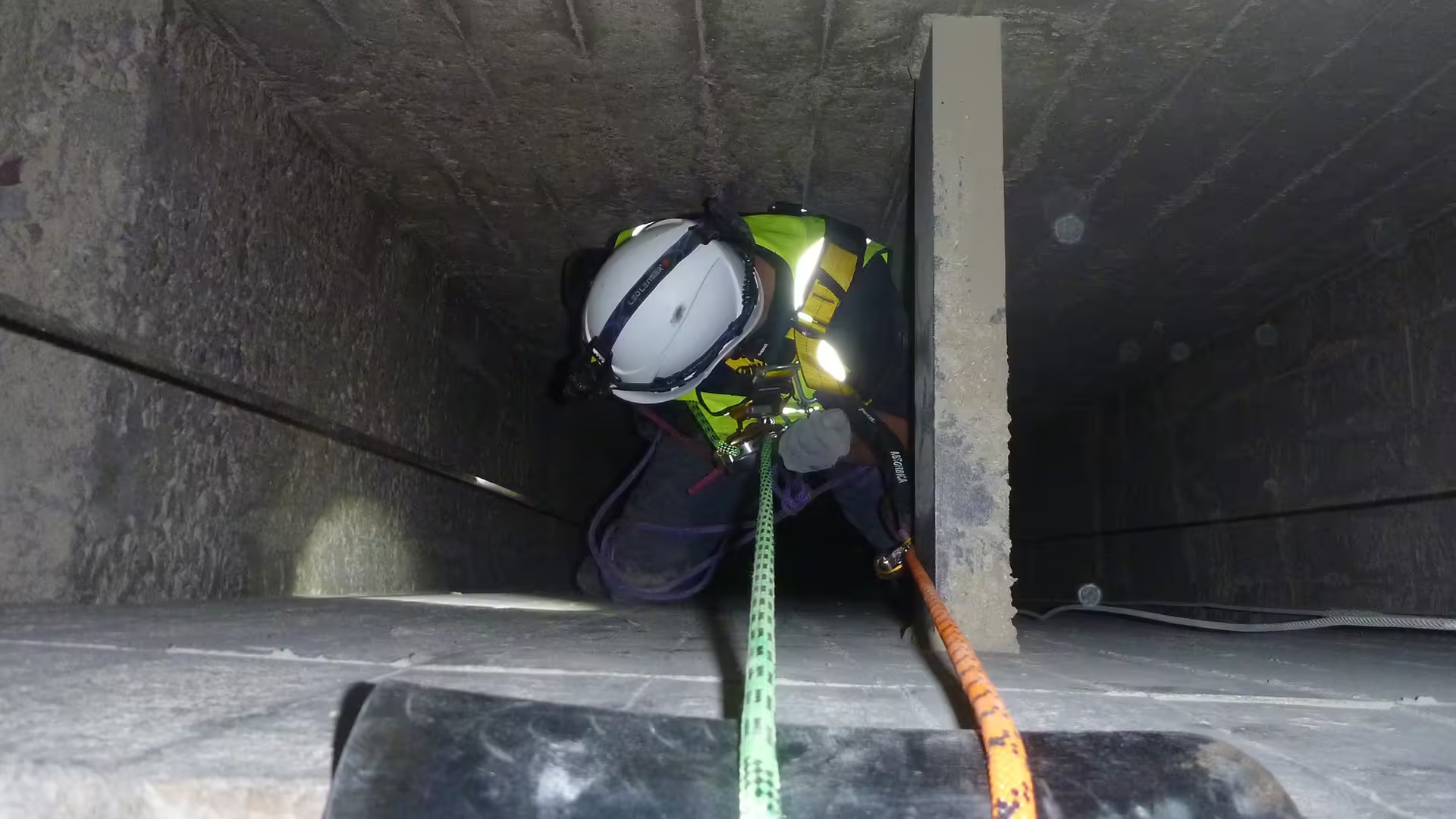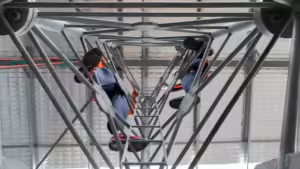There are different types of rope access and abseil system that all serve different needs. In this blog post, we look at a handful of the more common types out there.
When most people think about rope access systems, they imagine someone wanting to abseil down the side of a massive skyscraper. Depending on the work being done this may involve a large movable platform (building maintenance unit, or BMU) suspended off the edge of the building that is raised and lowered as required.
More common, however, is the use of a rope access system. Rope access systems allow a worker to connect themselves to ropes where they can then lower and raise themselves up and down the sides of a building while suspended.
Colloquially, this is often referred to as abseil. Within the industry, however, the phrase “rope access” is used. Strictly speaking, abseiling is a particular technique that could be used while completing rope access work.
What is rope access?
Rope access is the method used to access difficult areas that cannot be reached using scaffolding, an EWP or other means. A worker dons a special rope-access harness and connects to a rope line. These ropes are in turn connected to an anchor point that provides support for the worker while they abseil, climb or traverse a work area while suspended from the rope.
While from the outside it can appear that rope access and more traditional fall protection systems utilise much of the same equipment, the way the two systems operate is significantly different.
Rope access systems are designed to support the full load of the worker and their equipment while they are suspended from the working rope (a secondary backup rope will also be used in case of equipment failure). By contrast, a fall protection system is itself the backup. It is designed to protect the worker against the peak forces generated during a sudden, uncontrolled fall.
Put another way, one is a work positioning system while the other is a work safety system.
Rope access systems are commonly found on multi-storey buildings where access to the facade is required for cleaning, maintenance or repairs. They can also be found on other structures where the use of an EWP or other access method may not be possible. This can include remote areas, bridges and more.
Anchor systems for rope access or abseil
Much like fall protection systems, the most common type of rope access system involves installing anchors on a building’s roof or other suitable structure.
Rope access anchors do not feature in-built shock absorbing capabilities, like many fall protection anchors do, and are instead manufactured to support the sustained, controlled, load of the worker and their equipment while they remain suspended.

In many common installations, rope access anchors are installed in pairs allowing one to be the working line while the other acts as a backup in case the line or components on the working side fail.
Rigid rail systems for rope access
Rigid rail systems work in much the same way as a roof anchor point but bring the added benefit of making repositioning laterally easier.
With a rigid rail system, a single rail is installed along the edge of building. The worker connects a shuttle to the rail which can travel along the path – not entirely dissimilar to how a monorail works.
Many rigid rail systems also allow the shuttle to be locked off, meaning that it will not move along the path of the rail if the worker does not wish or need it to.

Davit systems for rope access or abseil
A davit is a fixed or removable device that attaches to a baseplate and forms the anchor off which a technician will be able to abseil. Davits can look something like a tower crane used in construction.
Davits are used in situations where a rope access system is needed, but the parapet is fragile or by design is not suitable for supporting the weight of the abseiler’s ropes.

The advantages of using a davit compared to other types of rope access systems is that the base plates can be installed while the roof slab is being poured. This creates an extremely solid base for the system to operate on. Along with this, some base places can be installed this way feature a flush or low-profile finish. This results in reduced risk of trip hazards being present when the davit arm itself is not in place.
Needles for rope access
A needle looks a lot like a davit, although is lower to the ground and with a larger base.
Needles are used when the loads generated by rope access work need to be spread over a larger area than the installation point of an anchor or the base of a davit. This can occur when the roof structure or materials cannot withstand the point loads of rope access or abseil and need the forces dispersed over a wider area to maintain the integrity of the structure and protect it from damage.
They can also be used when the access requirement is very infrequent or a one-off temporary situation.
Finding the rope access system to suit your needs
Discussing your access needs with an expert is the best way to find a cost-effective, compliant and efficient solution.
Height Safety Engineers have been in the business of protecting people for more than 20 years now. Start your safety journey with us by calling 1300 884 978, email enquiries@heightsafety.net or use the form on this page to get in touch with our team.





